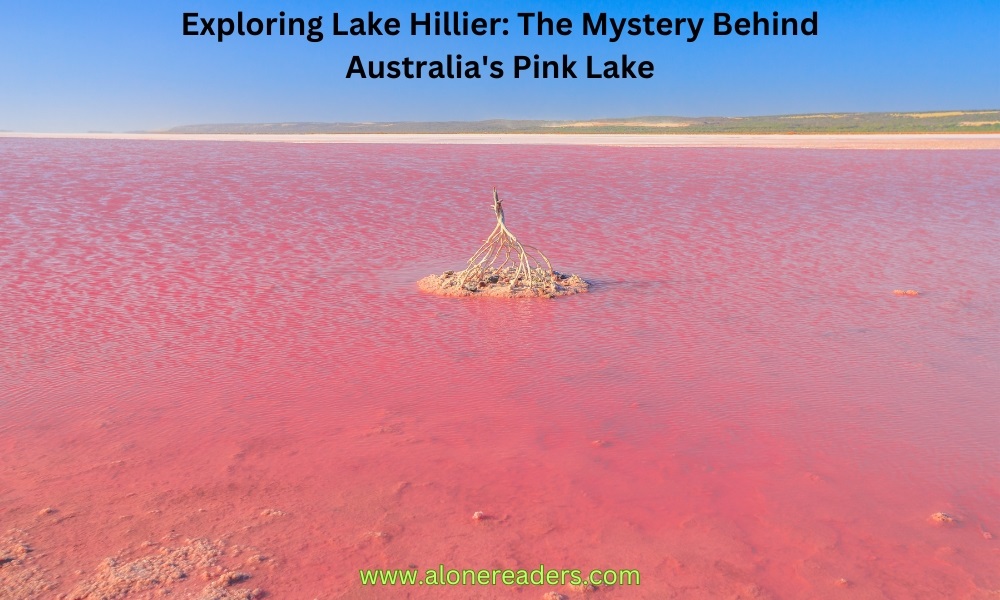
Nestled on the edge of Middle Island, the largest of the islands that make up the Recherche Archipelago in Western Australia, Lake Hillier presents a stunning natural spectacle: a vivid pink lake, surrounded by lush greenery and the deep blue of the Southern Ocean. This striking contrast, which looks almost surreal from above, has captured the curiosity of scientists, tourists, and nature lovers worldwide. But what exactly makes Lake Hillier a pink puzzle?
The lake, measuring about 600 meters in length and 250 meters in width, is not unique in its coloration—there are a few other pink lakes around the world, but Lake Hillier's consistent pink hue, visible both from the ground and the air, sets it apart. The color is so distinct that it retains its pink hue even when water is taken in a container. This phenomenon has long baffled scientists, leading to extensive research to understand the cause behind its unique coloration.
Early hypotheses suggested that the pink color might be due to high levels of salinity, akin to that in the Dead Sea. While Lake Hillier does have high salt content, research has shown that this alone does not cause the pink color. Scientists have since found that the hue is due to the presence of a particular type of microalgae known as Dunaliella salina. These algae produce carotenoids, organic pigments found in plants and some other organisms, to protect themselves from the sun's rays. These carotenoids, particularly beta-carotene, are responsible for the lake's pink color.
Another contributor to the lake's color could be halophilic bacteria in the salt crusts. Halobacteria have a red pigment that absorbs sunlight and converts it into energy, similar to how plants use chlorophyll for photosynthesis. The combination of these organisms creates a perfect mix for the lake's distinctive hue. Interestingly, despite the high salt content and unique biology, the water in Lake Hillier is considered safe for humans to swim in, although accessing the lake can be challenging due to its location.
Lake Hillier is not only a scientific curiosity but also holds a particular allure for tourists and photographers, offering stunning aerial views. The lake's isolation, being on an island off the coast, adds to its mystique. Tourists often take scenic flights to view the lake from above, as this provides the best vantage point to appreciate its striking color contrast with the surrounding landscape.
The history of Lake Hillier is as interesting as its color. It was first discovered in 1802 by a British explorer and navigator, Matthew Flinders, who took samples from the lake and noted its pink hue. The island was later used for whaling and salt extraction, but these activities did not seem to affect the lake's color.
In terms of ecology, the lake and its surroundings support a diverse range of wildlife, including a variety of bird species. The dense eucalyptus and paperback forests of Middle Island and the surrounding waters that are home to dolphins, seals, and whales contribute to the region's biodiversity, making it an ecological haven.
The future of Lake Hillier looks promising in terms of research and tourism. Scientists continue to study its unique properties, not only to understand the mechanisms behind its color but also to explore potential applications for the microorganisms found in its waters. The microalgae and bacteria thriving in such extreme conditions might offer insights into new technologies or pharmaceuticals.
In conclusion, Lake Hillier remains one of Australia’s most intriguing natural wonders. Its distinctive pink hue, a result of a delicate balance of nature, is a reminder of the mysteries that our natural world holds. While the lake has revealed some of its secrets to scientists, it continues to fascinate and inspire those who witness its unique beauty. This pink puzzle, set against the rugged backdrop of Western Australia’s coastline, is a testament to the wonders of the natural world, encouraging both awe and scientific inquiry.